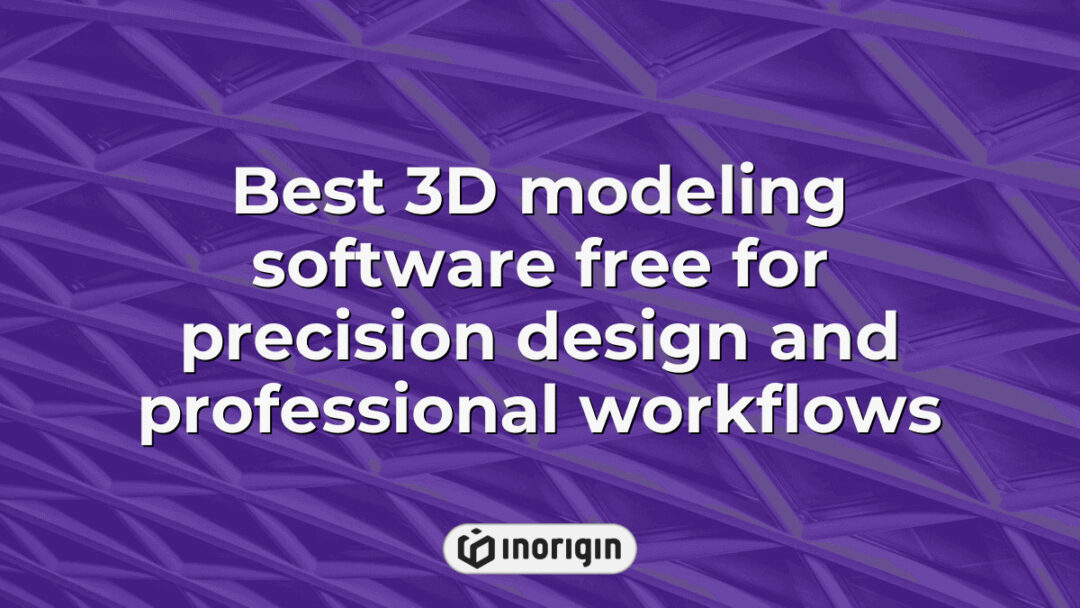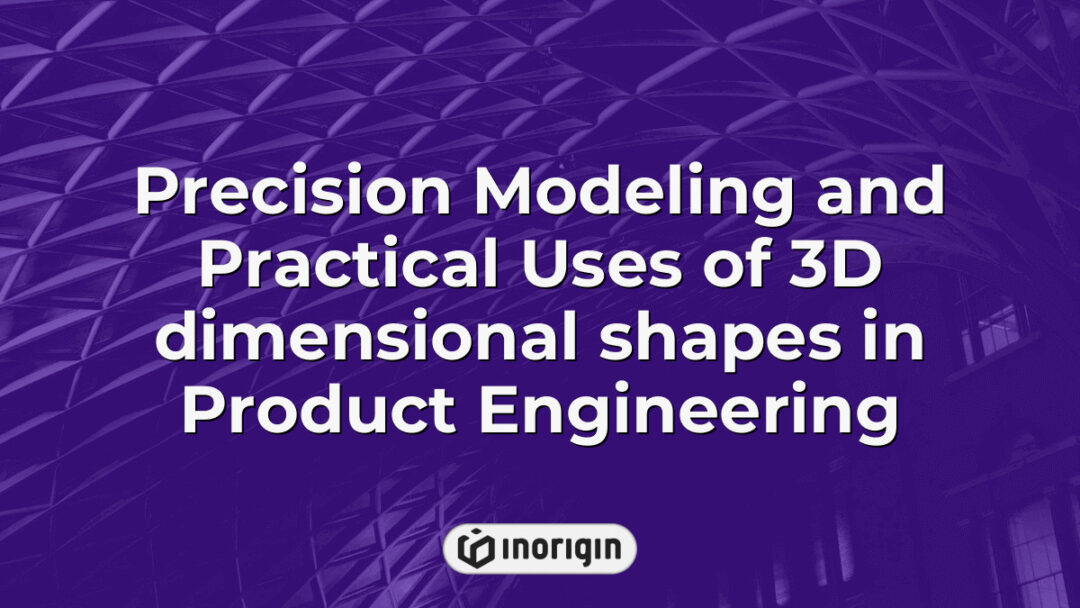In the ever-evolving landscape of digital creativity, the phrase “a canvas awaits” rings particularly true for budding 3D artists and seasoned professionals alike. The accessibility of high-quality 3D modeling software has transformed the creative process, enabling individuals to breathe life into their imaginative visions without the burden of financial investment. This article explores the best free 3D modeling software available today, examining their features, usability, and the unique advantages they offer. By delving into this realm of digital artistry, a plethora of tools emerges, allowing creators of all skill levels to sculpt, animate, and innovate, thus fostering a dynamic environment where artistic expression knows no bounds.
| Aspect | Key Takeaway |
|---|---|
| Focus on Software Quality | The best 3D modeling software free options like Blender combine powerful sculpting and animation features suited for professional product design and engineering workflows. |
| Beginner Accessibility | TinkerCAD offers an intuitive interface with a block-building approach, making it ideal for newcomers easing into 3D modeling within a sophisticated design environment. |
| Community & Learning | Active support forums such as Blender Artists and SketchUp Community provide essential collaboration, tutorials, and shared resources to enhance users’ skills and creativity. |
| Key Features to Prioritize | Select software featuring parametric modeling tools, user-friendly navigation, and robust community support to ensure adaptability and efficiency in complex design tasks. |
| Optimizing Workflow | Employing keyboard shortcuts, standardized project structures, and user-generated templates can significantly accelerate the 3D modeling process and maximize productivity. |
| Commercial Use Considerations | Review each software’s licensing terms carefully to confirm allowance for commercial projects, ensuring compliance while leveraging free 3D modeling tools professionally. |
| Hardware Requirements | Efficient operation of leading free 3D modeling software typically requires a capable CPU, GPU, and minimum 8GB RAM to handle advanced designs and rendering smoothly. |
Top Free 3D Modeling Software Options
In the current digital age, where creativity and innovation intertwine, the search for best free 3D modeling software has become increasingly pertinent. Coupled with the demand for accessible tools, several programs have emerged that cater to both novices and seasoned professionals alike. Among the leading contenders, Blender stands out due to its robust feature set, encompassing everything from sculpting to animation. Further options like SketchUp Free and FreeCAD offer unique experiences, enriching the pool of free 3D modelling software. Transitioning to the realm of open source, software such as Wings 3D and MakeHuman provide valuable resources for those seeking to delve into the fields of character design and organic modelling. This diverse range of options caters to various needs, whether one is engaged in engineering designs or artistic pursuits. Ultimately, the landscape of free 3D modeling software is abundant, ensuring that users can find tools that align with their specific objectives, whether for professional use or personal exploration.
Features to Look for in Free 3D Modeling Software
In the quest for the optimal free 3D modeling software, several features stand as beacons guiding potential users. Visualize a sculptor wielding multiple tools, each designed for a specific purpose; such is the necessity for advanced tools to manipulate complex designs effortlessly. This capability, emphasised by its relevance within industries and artistic pursuits alike, hinges on certain essential elements. Firstly, the software should offer robust parametric 3D modellers, which allow for the modification of geometry driven by parameters; this adds a layer of adaptability to the design process. Secondly, usability cannot be overlooked; an interface that balances sophistication with intuitive navigation can significantly affect productivity. Lastly, the inclusion of a strong community support system is crucial, as access to tutorials, forums, and shared resources can enrich the learning experience and foster creativity among users. Each of these components plays a crucial role in shaping the overall efficacy and appeal of 3D modeling software, intertwined with the potential to unlock limitless design possibilities. With these considerations in mind, choices become clearer, leading to informed decisions that align with project objectives.
User-friendly 3D Modeling Tools for Beginners
User-friendly 3D modeling tools for beginners present a plethora of possibilities that simplify the often-daunting design process. First and foremost, software like TinkerCAD often springs to mind, given its intuitive interface and accessibility for novices. This particular tool employs a block-building method that allows users to manipulate shapes effortlessly, promoting creativity without overwhelming complexity. Furthermore, other options exist—Blender, for instance, although it carries a steeper learning curve, also supports a variety of design features that may appeal to eager learners seeking more robust capabilities. While some software packages recommend extensive tutorials for mastery, TinkerCAD often thrives on its straightforward, supportive nature, drawing in those wary of technology. As a result, beginners can embrace 3D design software that fosters exploration and experimentation, hence demystifying the field of digital creation without necessitating prior experience or advanced skills.
Community and Support for Free Software Users
While some may argue that free software lacks the robust community and support systems typically found in paid alternatives, this assumption often overlooks the myriad platforms dedicated to fostering user interaction and cooperative development. In the context of 3D modelling, an array of free software options has emerged, encouraging not only collaboration among designers but also the cultivation of public designs that can serve as invaluable learning resources. Prominent forums and online design communities, such as Blender Artists and SketchUp Community, facilitate exchanges of ideas, tips, and techniques among users, thus enhancing the overall experience and proficiency in 3D modelling tasks. Users engaging with these platforms frequently report feeling more empowered, as the active involvement in community discussions can lead to improved skill sets and creative outputs. Such interactions reinforce a sense of belonging, countering any concerns regarding isolation that might accompany the use of free software. By leveraging these communal resources, both novice and experienced designers are enabled to succeed in their projects, creating a supportive atmosphere that benefits all members. Consequently, the synergy between community engagement and access to public designs becomes a driving force for innovation and creativity within the realm of free 3D modelling software.
Tips to Maximize Efficiency in Free 3D Modeling Software
In the sphere of 3D modeling, maximizing efficiency with free software can be likened to a sculptor meticulously chiselling away at a block of marble, revealing an intricate form while minimising waste. Take, for instance, a small startup company that utilises free 3D modeling software to design items that are ready for 3D printing. With the demands of rapid prototyping and time-sensitive projects, restoring efficiency becomes essential. Transitioning between toolsets can often lead to a loss of productivity, thus choosing software that seamlessly integrates various functions—such as generating 3D printing-ready models, creating designs that closely resemble real-life objects, and optimizing workflow processes—becomes crucial. Strategies like refining keyboard shortcuts or establishing a consistent project file structure not only encourage an organised workflow but also enhance overall output.
In addition, incorporating user-generated templates or community resources can streamline the design process significantly. It allows designers to build upon existing models and adapt them for specific needs, rather than starting from scratch each time. A common practice in this regard involves leveraging libraries of design assets—models that have been pre-validated for 3D printing, which can save time and ensure functionality.
For enhancing overall efficiency, setting clear priorities at the start of a project is beneficial. Allocating time slots for design phases, feedback sessions, and revisions can help in adhering closely to deadlines; ultimately, this structured approach, along with utilizing readily available online communities for support, will promote not just individual productivity, but also foster collaboration among users of free software, ensuring that the collective experience elevates the potential of the tools available.
Frequently Asked Questions
What are the system requirements for the best free 3D modeling software?
Assessing the system requirements for premier free 3D modelling software reveals a surprisingly intricate landscape of technical specifications. For enthusiasts and professionals alike, there exists a fundamental understanding that the software demands certain hardware capabilities to ensure optimal performance; this entails a well-balanced combination of CPU, GPU and RAM. For instance, leading free options often necessitate at least an Intel Core i5 or its equivalent, alongside modern graphics processing units such as NVIDIA GeForce GTX 1050 or the AMD Radeon RX 560, which have emerged as benchmarks for graphical efficiency. Transitioning to memory requirements, a minimum of 8GB of RAM is typically advisable, whilst 16GB or more is recommended for those engaging in more complex projects; this enhances multitasking abilities and reduces rendering times significantly. Operating system compatibility also plays a crucial role, with Windows 10, macOS 10.14, or various distributions of Linux often serving as prerequisites. When considering these elements cumulatively, the reality is that superior free 3D modelling software necessitates a noteworthy investment in hardware to achieve the functionalities it promises; without meeting these specifications, users may encounter sluggishness or functionality limitations that hinder their creative endeavors. Thus, an informed approach to system configuration is not merely beneficial but rather essential for those aspiring to leverage the full capabilities of available software options.
Can I use free 3D modeling software for commercial projects?
The question of whether free 3D modeling software can be utilized for commercial projects is quite significant, particularly in a landscape where accessibility to professional-grade tools is increasingly democratized. Recent studies indicate that nearly 40% of independent creators choose free software for business purposes, demonstrating a marked shift toward non-traditional tools. This statistic highlights a broader trend; as these applications evolve, they frequently come equipped with features that rival more expensive counterparts, allowing professionals to undertake serious work without the burden of hefty licensing fees. While some free options, such as Blender, are widely recognised for their robust capabilities and extensive support communities, it is essential to comprehend each software’s licensing agreements to ensure compliance with commercial use stipulations. Focusing on licensing, some programs may impose restrictions, while others explicitly allow commercial utilisation—these nuances are critical for entrepreneurs and designers alike. Hence, the viability of free 3D modeling software for commercial applications remains a nuanced subject, one that expands with ongoing developments in technology and community support.
How does free 3D modeling software compare to paid alternatives?
The comparison between free 3D modeling software and their paid counterparts reveals significant variances in features, performance, and overall usability. Free software, such as Blender, offers a robust set of tools that can often rival those found in premium programmes; however, limitations may become apparent, particularly in areas like customer support and advanced functionalities. On the other hand, paid alternatives often come equipped with more streamlined interfaces and specialised features, catering to professional users who require high efficiency and reliability in complex projects. Furthermore, while free options tend to have large online communities that provide resources and support, such as tutorials and forums, they may lack the integrated support systems provided by paid software—such as dedicated customer service and regular updates. While free software holds appeal for beginners and enthusiasts looking to explore 3D modeling without financial commitment, the investment in paid alternatives may yield greater long-term benefits for serious professionals. Each option serves distinct needs; thus, the decision ultimately hinges on the specific requirements and goals of the user.
Conclusion
In conclusion, selecting the best free 3D modeling software involves evaluating features, exploring user-friendly tools, engaging with supportive communities, and implementing efficiency-boosting tips. By prioritizing functionality, fostering creativity, and enhancing productivity, users can navigate the expansive landscape of free software to achieve impressive 3D modeling results.
Related posts:
- Comprehensive Guide to Free Blender Models for Professional 3D Design Projects
- Cad Free Software Options for Precision Product Design and Engineering at Inorigin
- 3D design software free Options Backed by Professional Product Engineering Expertise
- Free Modeling 3D Tools and Techniques for Precise Product Design at Inorigin
- Blender free models] for Professional Product Design and 3D Printing Solutions at Inorigin
- Drawing software free for professional product design and precision engineering




